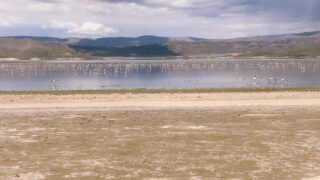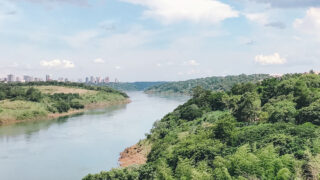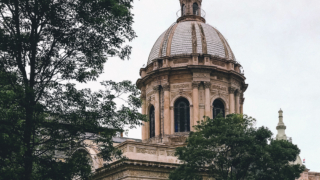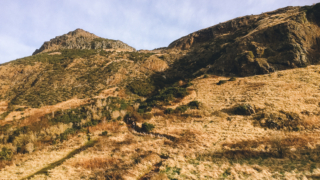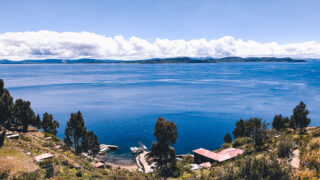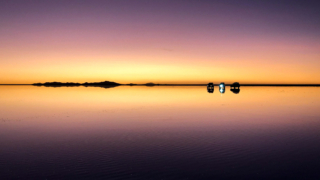Bolivia, oh Bolivia. There are many incredible places to mention in this ultimate guide for Bolivia. Here I spread my love for vicuñas and developed an obsession with cholitas – the countries’ indigenous Aymara and Quechua women, who dress in several layers of skirts, have braided hair, and wear distinctive bowler hats.
As one of the poorest countries in Latin America, Bolivia’s reputation is far from what it should be. The expectations are that of an unclean country, with a lack of hot water and the need to carry around your own toilet paper. But I found this far from the truth. I was able to wash myself with hot water, did not have any awkward situations in public toilets – and I didn’t find the country, although rough around the edges, unclean. For me, Bolivia was a very pleasant surprise. I learnt that I like being called ‘mamita’ and no one else thinks that ‘bobby’ is a much better abbreviation for the local currency than BOB.
Although one of the smallest countries in South America, the vast choice of things Bolivia has to offer is astonishing. It is home to the world’s biggest mirror in the form of a desert, a hotel made of salt, death road, the opportunity to blow up dynamite, an unforgettable train journey, the Amazon, volcanic waters, and glaciers. Wondering how much time to spend in Bolivia, what to do and what on earth vicuñas are? Read on and find out.
Post Contents
WHAT TO DO
Bolivia Highlights.

Do you only want to cover the highlights of Bolivia? Then head to Copacabana to visit the highest lake in South America at 3,810 meters – say what?! La Paz for some cholita wrestling, and high altitude cable car rides above the city; and Salar de Uyuni, the world’s largest mirror in the form of salt flats.
Adrenaline Junky Or Adventurous?
La Paz has a lot to offer for adventurers. The most famous experience is mountain biking down Death Road. You can also paraglide or ice climb in 6,000-metre altitude. Ever wanted to know what it feels like to blow up dynamite or walk in dinosaurs’ footprints? Then head to the biggest city in Bolivia, Potosí an old mining town or to Torotoro National Park.
Don’t Want To Be A Cliché Tourist?

Head to the country’s capital Sucre or the country’s biggest city Santa Cruz; or immerse yourself in the beautiful countryside of Samaipata or Tupiza. For a cheap visit to the Pampa or Amazon, head to the North of the country. Rurrenabaque is the most popular hub. You can also spot jaguars at San Miguelito Jaguar Conservation Reserve. Although I am not sure whether the high sighting records can be trusted.
Festivals.
Happen to find yourself in Bolivia for carnaval? Oruro is the place to go! But, make sure to book your accommodation in advance.
GOOD TO KNOW
Altitude.

Bolivia is notorious for its high altitude with La Paz’s elevation being 3,640 m. If you haven’t acclimatised already, ensure to calculate approximately three days into your itinerary to let your body adjust.
How Much Time To Spend In Bolivia.
I spent three weeks in Bolivia, but you can easily spend two months here. To cover the highlights, one to two weeks is enough.
Where To Enter Bolivia.
Bolivia can be entered from Puno Peru to Copacabana, from San Pedro Chile to Uyuni or from Salta Argentina to Tupiza.
Best Time To Visit.
The recommended time of year is from May to November when the country is at its most dry. The rain season is from January to March and this time of year should be avoided if you head to Bolivia for hiking, although it is the best time to visit the Salar de Uyuni.
I went in mid-January to early-February and the weather was fine. It was cold, but sunny and it rarely rained. During rainy season it also gets very cold at night and hostels rarely have heating.

Safety.
Although it’s a poor country Bolivia is safe to travel around, as far as South American countries go. The same advice as for any other South American country stands ‘no dar papaya’, meaning do not keep items unattended, especially your phone. You can take your camera most places without any problems, but if you get into the wrong neighbourhood in La Paz you might not be so lucky.
Transport.
Bolivia is easy to travel by bus. Night buses are safe but keep anything valuable on your body. Buses are cheap and relatively comfortable. There are often two fleets leaving at the same time but ask for bus number two, as the bus is usually newer.
If you feel uncomfortable taking local buses or want to meet fellow travellers, you can opt for the more expensive transport provided by Bolivia Hop. They only cater for the most popular tourist destinations, and discounts for accommodation and tours are offered.
Taxis are cheap and prices can be negotiated. You can also take cheap flights to the Amazon and you can take an unforgettable train from Oruro to Uyuni.
ATMs.
My go-to bank was BCP. Its ATMs are prominent and you can withdraw up to BOBBIES 1,400 for free.

Plugs.
There are two different plug types, both are European. … why would you have two different types in one tiny country? The types are Type C (European) and Type A (North American).
Visa.
Bolivia can be entered for 90 days without a visa as a European, US, and Australian National. Entry stamps will be granted upon arrival. Please check your immigration guidelines before entering the country. Airlines need you to be able to prove that you have either a bus or flight ticket out of the country.

Did I do a good job of sharing my love for this country? Also did I mention that I love vicuñas? Still no clue what they are? They are the cutest relatives of the llamas and alpacas, sadly endangered, and if you get lucky you will spot them in the wild.
Now go ahead and explore! Try not to lose your towel.

